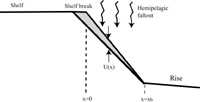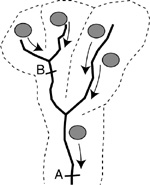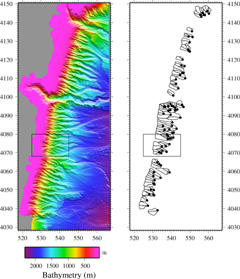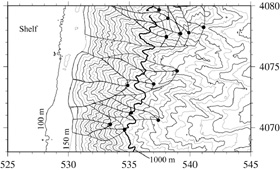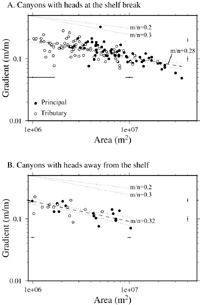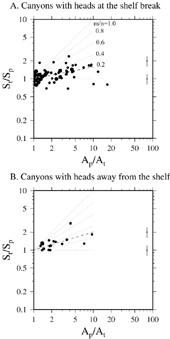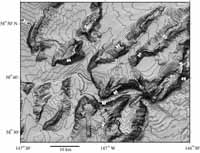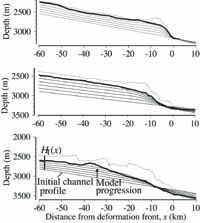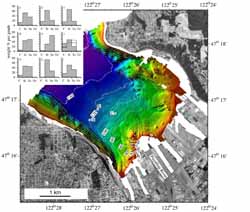For the submarine canyons, if erosion rate is assumed to be similarly controlled by flow power or bed shear stress (as erosion by turbidity currents is most likely similarly caused by abrading particles carried by the flow or flow-induced bed failure), the relationship between channel gradient and catchment area is a clue to the origin of the incision. The central USA Atlantic continental slope is known to have been aggrading for a long time by the accumulating hemipelagic sediments deposited from the water column (top figure, right). The accumulating sediments form unstable deposits around the walls of canyons, which occasionally fail, initiating sedimentary flows (debris flows and turbidity currents). The frequency and maximum size of sedimentary flows experienced by the canyon channel should relate to the up-slope canyon area. (E.g., lower figure right: the channel at 'A' experiences all five flow events whereas that at 'B' experiences only three.) If other factors were constant, this will cause a tendency for erosion rate to depend on hemipelagic catchment area. As the specific flow power and bed shear stress of a sedimentary flow both depend on the channel gradient, then erosion rate may also be expected to vary in a similar way to E~A^mS^n. The gradient-area curves can therefore be interpreted if the channels are approaching a form of erosional balance in which the erosion rate is spatially uniform or at least slowly varying spatially. The effect of frequency of flow events increasing down-canyon (with increasing A) is then balanced by shallower channel gradient, producing the inverse power law relationship that is observed also in submarine canyons.
